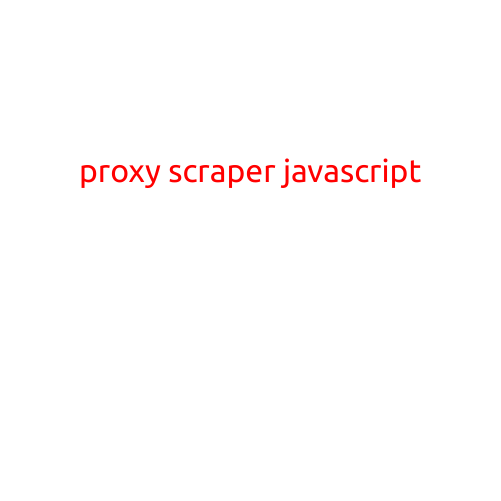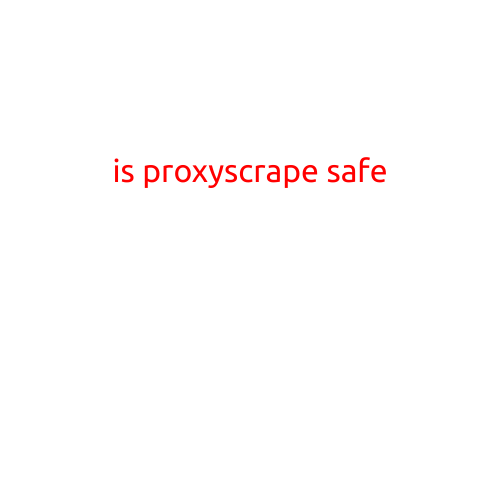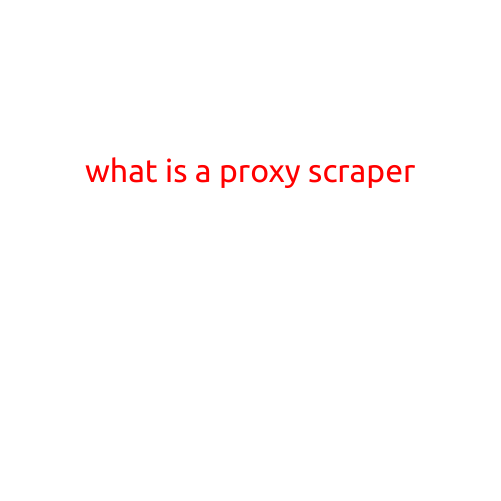
Here is an article on “Proxy Scraper JavaScript”:
Title: Proxy Scraper JavaScript
Introduction:
In the world of web scraping, proxies play a crucial role in ensuring that your scraper accesses websites securely and efficiently. A proxy server acts as an intermediary between your scraper and the website you’re trying to scrape, allowing you to hide your IP address and avoid being blocked by website administrators. In this article, we’ll explore how to create a proxy scraper using JavaScript.
What are Proxies?
Before we dive into the code, let’s quickly discuss what proxies are and why they’re important. A proxy is a server that acts as an intermediary between your client (in this case, your JavaScript code) and the target server (the website you’re trying to scrape). When you make a request to a website through a proxy, your request is sent to the proxy server, which then forwards the request to the target server.
IP addresses are used to identify devices on a network, and websites can block specific IP addresses to prevent scraping. By using a proxy, you can hide your IP address and make it appear as if the request is coming from the proxy server, rather than your own device.
Why Use Proxies for Scraping?
Proxies offer several benefits when it comes to web scraping, including:
- IP address rotation: By using multiple proxies, you can rotate IP addresses and avoid being blocked by websites that flag your IP address as suspicious.
- Anonymity: Proxies allow you to hide your IP address and maintain anonymity while scraping.
- ** Increased scraping speed**: Proxies can help speed up your scraping process by distributing the requests across multiple IP addresses.
- Better handling of anti-scraping measures: Many websites employ anti-scraping measures, such as CAPTCHAs and rate limiting. Proxies can help bypass these measures by making it appear as if requests are coming from multiple IP addresses.
Creating a Proxy Scraper
Now that we’ve discussed the importance of proxies, let’s create a simple proxy scraper using JavaScript. We’ll use the puppeteer library to create a headless Chrome browser and the proxy-pool library to manage our proxy pool.
Step 1: Install Required Libraries
First, install the required libraries using npm:
npm install puppeteer proxy-pool
Step 2: Create a Proxy Pool
Next, create a proxy pool by specifying an array of proxy servers:
const proxyPool = new ProxyPool({
proxies: [
'http://proxy1.com:8080',
'http://proxy2.com:8080',
'http://proxy3.com:8080',
],
});
In this example, we’re creating a proxy pool with three proxy servers.
Step 3: Create a Scraping Function
Next, create a scraping function that uses the puppeteer library to create a headless Chrome browser and navigate to the target website. We’ll also use the proxyPool library to select a random proxy server from our pool:
async function scrape(url) {
const browser = await puppeteer.launch({ headless: true });
const page = await browser.newPage();
const proxy = await proxyPool.getProxy();
page.setProxy({
host: proxy,
port: 8080,
});
await page.goto(url);
// Extract data as needed
await browser.close();
}
In this example, we’re launching a headless Chrome browser, creating a new page, and setting the proxy server using the setProxy method. We’re then navigating to the target website using the goto method.
Step 4: Run the Scraper
Finally, we can run the scraper by calling the scrape function and passing in the target URL:
scrape('https://www.example.com');
Conclusion:
In this article, we’ve explored the importance of proxies in web scraping and created a simple proxy scraper using JavaScript and the puppeteer and proxy-pool libraries. By using a proxy scraper, you can hide your IP address, avoid being blocked by websites, and scrape data more efficiently. Remember to always respect website terms of service and user agreements when scraping data.





